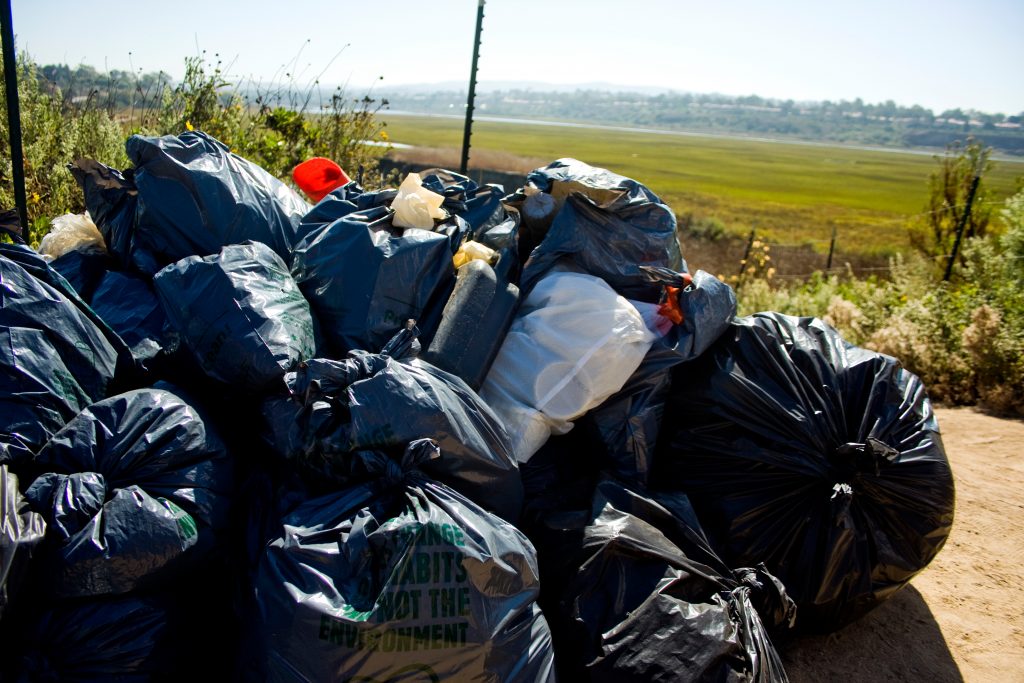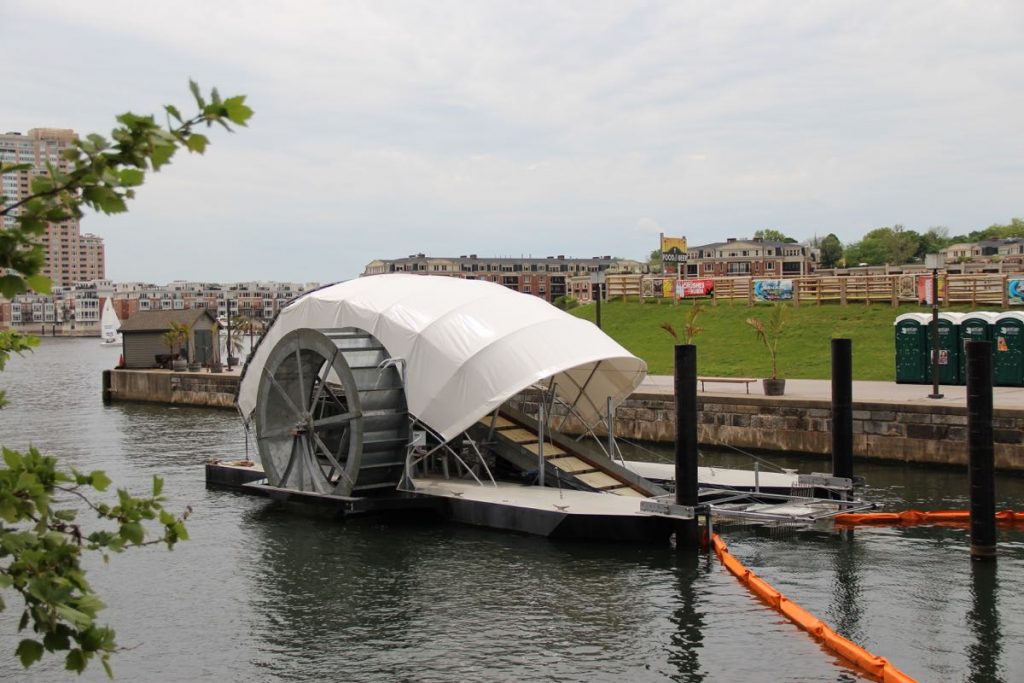
— Photo by Sara Hall ©
Floating trash in Newport Bay, the harbor and the ocean is a known problem, and in Newport Beach officials are utilizing a number of methods to tackle the rubbish.
Although the overall water quality in Newport Bay is good, trash and debris in the bay is an issue, said Newport Beach Assistant City Engineer Bob Stein during a Speak Up Newport meeting on May 9.
“You can’t go out into the harbor without seeing floating trash,” Stein said. “Trash is here and now.”
It’s a worldwide problem, but in Newport Beach, where the harbor, beaches and bay are economic drivers, clean water is critical, Stein said.
Stein discussed a number of methods to collect the trash before it enters the water, including catch basins, collection facilities, a water wheel, and a pilot program to stop at the source, before it even enters the waterways.
Hundreds and hundreds of tons of trash gets swept down during a storm. The majority of the trash found floating in the water are single-use plastic items, Stein said.
“A lot of the meals that we have, tons of plastic around the table that ends up in our catch basins and waterways,” Stein said.
A new plan aimed at reducing trash in the water is a pilot program with some inland cities, including Costa Mesa and Santa Ana.
It’s different than a litter reduction program, he clarified. It’s less about “put trash in the bin” and more about using single-use plastics as little as possible and reducing usage in the first place.
“If you don’t need a straw, don’t use a straw,” Stein stated simply. “Reduce trash at its source.”
The idea of using less straws, but not necessarily banning them, or using different, possibly biodegradable materials, is likely “where we’re headed“ anyway, he added.
The project requires quantifying baseline trash loads near key catch basins and nearby flood channels. The plan then calls for a public outreach and education campaign to “encourage reduced reliance on single-use plastics.
Although most of the loads of trash coming into the bay are not from the storm drains, Stein said, it’s coming from San Diego Creek and the Santa Ana-Delhi Channel.
On that front, the Santa Ana-Delhi Channel Regional Trash Facility, a trash collection and low flow diversion project, is currently under construction and is expected to be completed in fall. It’s located near the Newport Golf Course, next to the channel. The $9.3 million project is funded through several Orange County cities, including Newport Beach, the OC Water District, Irvine Ranch Water District, and Measure M grant funds.
A similar type of facility has also been proposed for the San Diego Creek, Stein reported.
“This type of design could be modified and adapted,” Stein said.
He anticipates there to be “extended discussions” on the idea and could take many years. In the interim, a water wheel has been suggested to help clean up the trash that is flowing down the creek.

— Photo courtesy of Baltimore Waterfront
A water wheel won’t be able to catch all of the rubbish, particularly very small pieces of trash, but it will still stop a “sizeable” percentage of the debris floating into the bay.
The system is basically a stationary, floating barge with a conveyer belt on one end, a standard-sized trash dumpster on the other end, and a water wheel in the middle.
Pylons funnel debris floating in the water toward the conveyer belt. Solar powered water pumps turn the water wheel, which moves the conveyer belt, which carries the trash into the bin on the other end of the barge.
When the dumpster is full it’s removed and a new, empty one is put in its place. An electric boat would slowly pull the full bin to shore for disposal.
The entire thing would be approximately 50 feet long and 24 feet wide.
It would be placed approximately 100 feet west from the Jamboree Road bridge in the San Diego Creek, which is the entry point for much of the debris coming into the bay.
There are opportunities for landscaping and fencing for security and to ensure it’s not an eyesore, he explained.
The idea for a solar-powered, debris-gathering water wheel has been around since late 2016.
Although it’s not a “sure” project yet, it seems feasible, Stein said.
“At this point, it looks like it’s a go,” Stein said.
The water wheel is currently in the preliminary engineering phase, Stein said. Officials expect to get through California Environmental Quality Act process by August, and find out about possible Ocean Protection Council grant funding in September. There has also been some interest in sponsorship, he added.
Assuming the funding comes through and all the discussions go well, construction could start in May 2020. Construction should take about six to eight months. Construction cost is estimated at $1.6 million, Stein said.
“It’s a little unusual for Newport Beach to have something like this,” Stein said. “We’re pretty excited about it.”
Other coastal cities have used the water wheel with success. The primary example (and what Newport’s water wheel is based on) is Baltimore, which uses a solar powered water wheel to collect trash from Jones Falls River before it enters the harbor.
Baltimore’s “Mr. Trash Wheel,” which has its own twitter and facebook page, has removed more than 1.5 million pounds of trash since its inception in May 2014.
A few other methods the city is utilizing to collect trash before it reaches the water are devices installed in storm drains.
There are more than 200 city storm drains that outlet into the harbor or bay, Stein noted.
The city installs 435 catch basins during the dry season every year, he explained. They help prevent street debris from making its way into the bay and harbor.
Catch basins are great, but they’re not enough, Stein said.
The city has also installed more than 40 Continuous Deflective Separation devices, and more are planned. Simply explained, the water flows in, the trash gets caught, and clean water flows out, Stein said.
On top of the collection projects, the new state regulations are “great,” Stein commented. They require every city to reduce trash in “high priority areas” over the next decade. Each agency will have to determine the “trash generation areas” are and come up with a plan to reduce it every year by 10 percent, Stein explained.
“We’re really enthusiastic about it,” and encouraging Newport’s upstream neighbors, he said.




